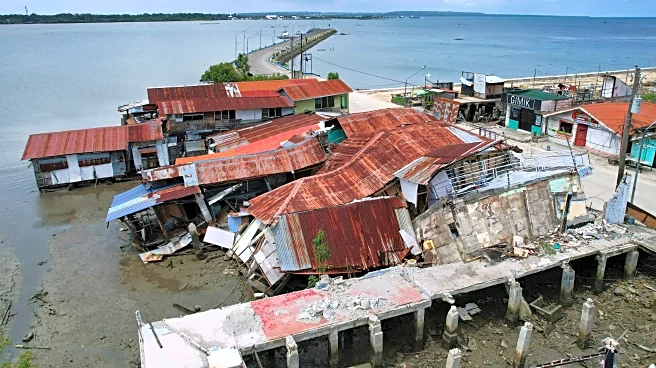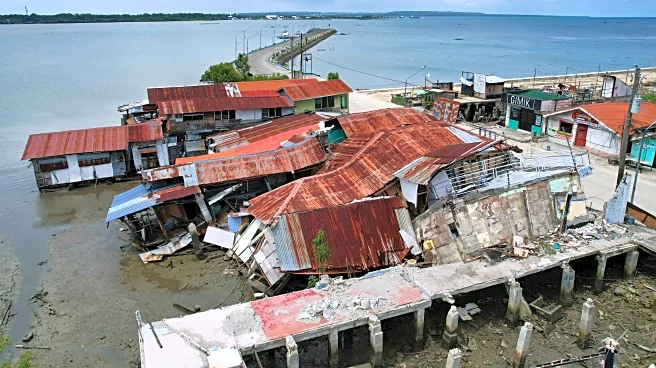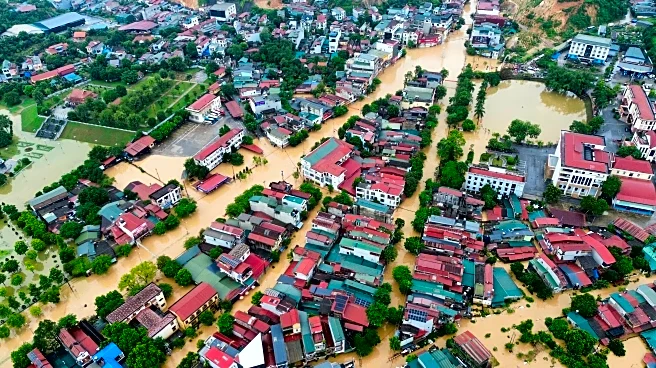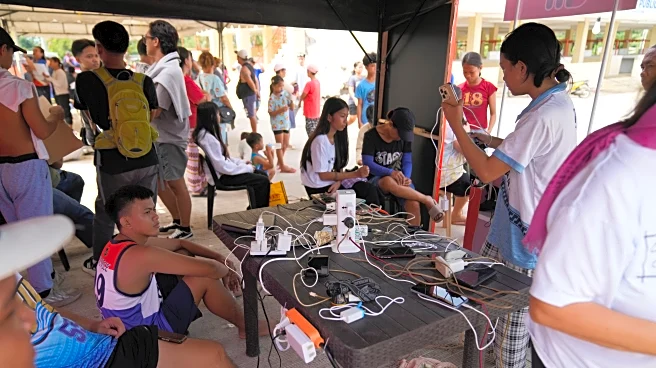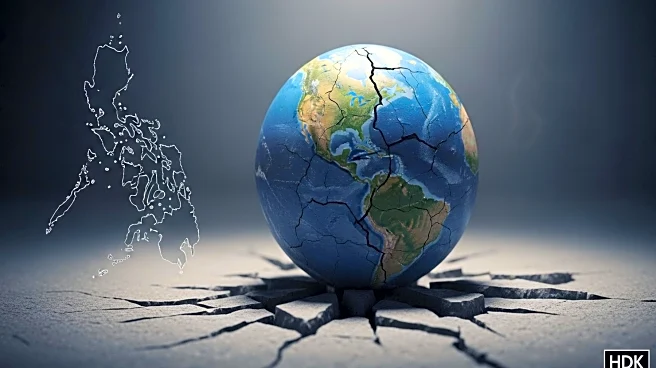What's Happening?
Typhoon Matmo has made landfall in the northern Philippines, exacerbating the country's disaster response challenges following a deadly earthquake and two recent storms. The typhoon, with sustained winds of up to 130 kph, struck Dinapigue town in Isabela province and is moving northwestward, affecting agricultural valleys and mountain provinces. Schools have suspended classes, and maritime activities have been restricted due to rough seas. The typhoon is expected to move into the South China Sea, heading towards southern China. This marks the 16th tropical cyclone to hit the Philippines this year, a country frequently affected by natural disasters due to its location on the Pacific 'Ring of Fire'.
Why It's Important?
The arrival of Typhoon Matmo poses significant challenges for the Philippines, a nation already grappling with the aftermath of a 6.9-magnitude earthquake that resulted in at least 72 deaths and over 550 injuries. The earthquake caused extensive damage to infrastructure, leaving thousands displaced and fearful of returning home due to aftershocks. The typhoon's impact could further strain emergency response efforts and resources, complicating recovery and relief operations. Additionally, the typhoon's trajectory towards southern China raises concerns about potential flooding and landslides in the region, highlighting the broader implications for disaster preparedness and management in Southeast Asia.
What's Next?
As Typhoon Matmo progresses towards the South China Sea, authorities in southern China are likely to prepare for potential flooding and landslides. The Philippines will continue to focus on disaster response and recovery efforts, addressing the needs of affected communities and ensuring safety measures are in place. International aid and support may be mobilized to assist in relief operations, while local governments work to restore infrastructure and provide shelter for displaced residents. Monitoring of weather patterns and coordination among regional disaster management agencies will be crucial in mitigating further impacts.
Beyond the Headlines
The frequent occurrence of natural disasters in the Philippines underscores the need for robust disaster risk reduction strategies and infrastructure resilience. The country's vulnerability to typhoons and earthquakes highlights the importance of investing in early warning systems, community preparedness, and sustainable development practices. The situation also raises ethical considerations regarding the equitable distribution of aid and resources, ensuring marginalized communities receive adequate support during crises.

